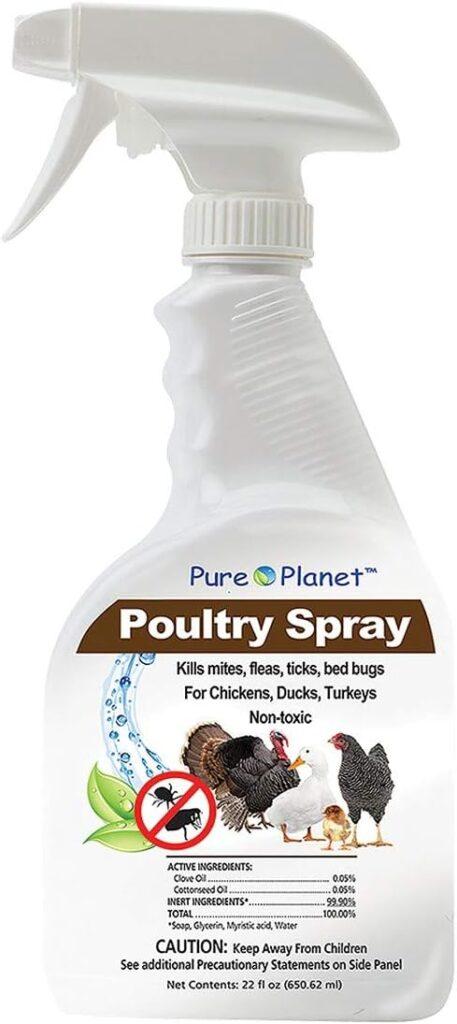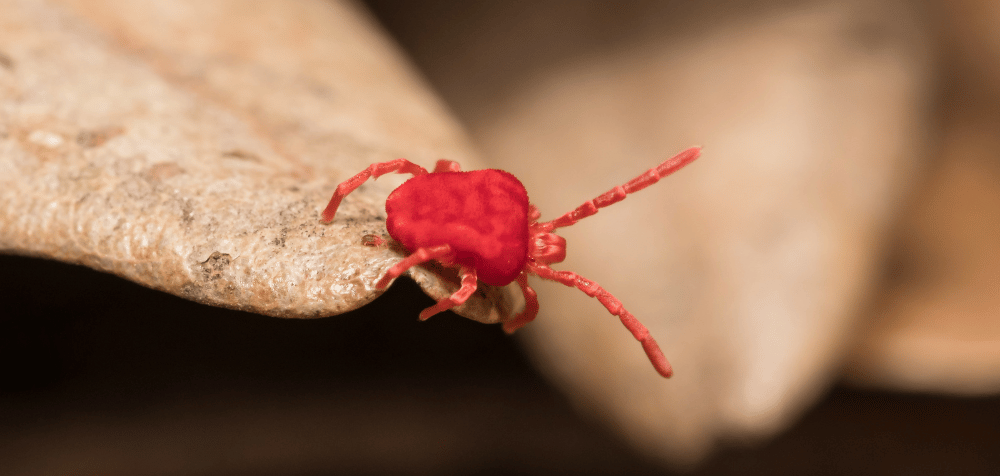One challenge every chicken owner will face at some point is how to manage mites or lice in their chicken coop, or on their chickens.
These pesky parasites can cause mass discomfort to your chicken, leading to decreased egg production, health problems, and in severe cases, even death.
Don’t worry, though! With the right prevention strategies and management tips, you can keep these little invaders at bay and ensure your chickens remain happy and healthy.
In this guide, we’ll go over the steps to both prevent and manage mites and lice in your chicken coop so you can keep your flock thriving.
What Are Mites and Lice?
Before diving into how to manage mites and lice, it’s essential to know what they are. While both are tiny parasites, they have some key differences.
- Mites are arachnids, meaning they’re related to spiders. They feed on the blood of chickens, usually at night, and hide in crevices of the coop during the day. This makes it tricky to spot them early on. The most common types of mites in chickens are red mites and northern fowl mites.
- Lice, on the other hand, are insects. They don’t suck blood but instead feed on dead skin and feather debris. Lice spend their entire lifecycle on the host bird, meaning you’ll likely spot them directly on your chickens if they’re present.
Signs of Mites and Lice Infestation
It’s crucial to regularly inspect your chickens and their living space for signs of an infestation. Here are some telltale signs that your chickens may have mites or lice:
- Ruffled feathers or excessive preening
- Bald patches or loss of feathers, particularly around the vent area
- Pale combs and wattles, a sign of blood loss from mite bites
- Decreased egg production
- Restless behavior at night (since mites are most active in the dark)
- Small, moving specks on your chickens or in the coop
How to Prevent Mites and Lice in Your Chicken Coop

Prevention is the best approach to keeping your chickens free from mites and lice. By following these steps, you can significantly reduce the risk of an infestation.
1. Regular Cleaning of the Coop
Mites, especially, love to hide in dark, warm crevices of chicken coops. Regularly cleaning your chicken coop is essential for preventing them from making a home. Here’s how to ensure a clean coop:
- Weekly deep cleaning: Once a week, remove all bedding and thoroughly clean and disinfect the coop. Pay close attention to corners, cracks, and nesting boxes where mites might be hiding.
- Replace bedding: Use fresh bedding regularly. Straw, wood shavings, or sand works well, but ensure it stays dry, as moisture attracts mites.
- Diatomaceous earth: Sprinkle diatomaceous earth in bedding areas, roosts, and crevices. This natural powder can help prevent and kill mites and lice by drying out their exoskeletons.
2. Maintain Good Coop Ventilation
Mites thrive in warm, damp environments. To prevent them from taking over, ensure your coop has proper ventilation to reduce humidity and moisture buildup.
- Install ventilation windows or fans to improve airflow.
- Make sure there’s no water buildup inside the coop from leaks or excessive droppings.
3. Quarantine New Birds
Introducing new chickens to your flock can accidentally bring mites and lice into your coop. Always quarantine new birds for at least 2 weeks before adding them to your coop. This allows you time to inspect and treat them if necessary before they mingle with your flock.
4. Provide Dust Baths
Chickens naturally dust bathe to clean themselves and fend off parasites. Creating a designated dust bath area in your coop or run can help chickens prevent lice and mites on their own.
- Ideal dust bath mix: Use a combination of dirt, wood ash, and a sprinkle of diatomaceous earth. Make sure the bath area stays dry and available to your chickens at all times.
How to Manage Mites and Lice in Your Chicken Coop

If you already have an infestation, don’t panic! Here are the steps you can take to effectively manage mites and lice in your chicken coop and get your flock back to good health.
1. Treat the Chickens Directly
To manage mites and lice effectively, it’s essential to treat the chickens themselves, especially if the infestation is widespread.
- Use poultry dust or sprays: Dust or spray your chickens with products specifically designed for lice and mites, such as permethrin-based poultry dust or sprays. Be sure to follow the product’s instructions for safe application.
- Repeat treatments: Many treatments require follow-ups after 7-10 days to kill any newly hatched mites or lice that were missed in the initial treatment.
- Spot treat infected areas: Pay close attention to the vent area, under the wings, and around the neck, as these are common places where lice and mites hide.
2. Treat the Coop
Once you’ve treated the chickens, the coop needs a thorough cleaning to prevent re-infestation. Here’s how to do it:
- Remove all bedding and nesting materials: Dispose of them far away from the coop, as they may harbor eggs, mites, or lice.
- Deep clean with disinfectants: Scrub down the entire coop with a mixture of water and a chicken-safe disinfectant. Make sure to get into every crack and crevice.
- Use diatomaceous earth: After the coop is dry, sprinkle diatomaceous earth around the coop, focusing on corners, roosts, and nesting areas.
- Apply insecticides: For heavy infestations, you might need to apply a chicken-safe insecticide spray to the coop. Make sure to follow instructions carefully to avoid harming your chickens.
3. Continue Monitoring and Maintenance
Even after you’ve successfully managed mites and lice in your chicken coop, continuous monitoring is essential to avoid future infestations.
- Regular inspections: Check your chickens and coop for signs of mites and lice weekly, especially during warmer months when parasites are more active.
- Maintain dust baths and continue using diatomaceous earth regularly to ward off future outbreaks.
- Keep the coop dry: Always ensure your coop is clean, dry, and well-ventilated.
Natural Remedies for Managing Mites and Lice
If you prefer a natural approach, several home remedies can help manage mites and lice in your chicken coop. While not always as potent as commercial treatments, these methods can complement your overall strategy:
- Garlic and vinegar: Adding garlic and apple cider vinegar to your chickens’ water may help repel parasites due to their strong smells.
- Essential oils: Oils like tea tree, lavender, and neem oil are known for their insect-repelling properties. You can mix a few drops of essential oil with water and spray it around the coop (just make sure it’s chicken-safe).
Final Thoughts on Managing Mites and Lice
Managing mites and lice in your chicken coop can seem like a daunting task, but with regular maintenance and a proactive approach, you can keep these pests under control. Prevention is always the best method, but if an infestation does occur, follow the steps outlined above to manage mites and lice effectively.
Your chickens will thank you for staying healthy and happy!

